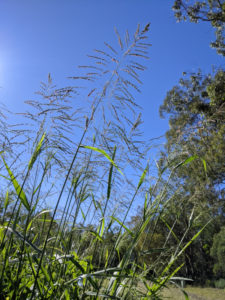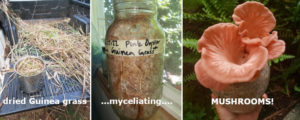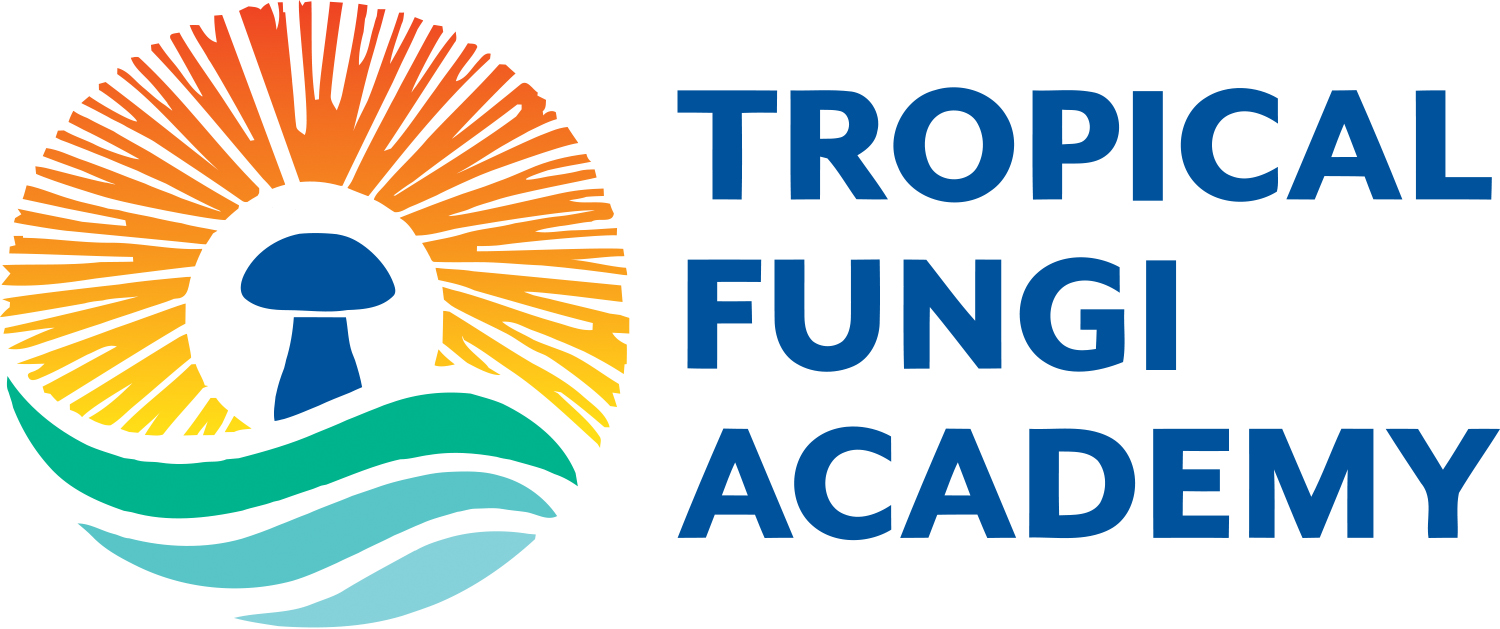One of the most common questions we get from participants of our mushroom cultivation workshops is: “Can I grow mushrooms on Guinea grass (Megathyrsus maximus)?” It is a great question given the abundance of this grass species. As we hadn’t yet tried it ourselves when previously asked, our response to participants was: “Possibly. Try it out. If you succeed then let us know so we can tell others!” After a couple of years of getting this question & giving folks the same response, we decided to try it ourselves…

Guinea Grass (Megathyrsus maximus) by Beth Addison-smith | CC0 public domain | iNaturalist
Guinea grass, originally native to Africa, has been widely introduced throughout the tropics as forage & fodder for domesticated animals. Due to its tendency to displace native plants, Guinea grass is considered an invasive weed in many locations around the world.
Loss of native plant biodiversity is not the only concern related to invasive Guinea grass. According to HawaiiWildfire.org, Guinea grass is a fire-prone species. In a scientific paper published in Applied Vegetation Science, the authors warned that “once forests are converted to grassland there is a significant increase in fire intensity, which likely provides the positive feedback to continued grassland dominance in the absence of active fire management” (Ellsworth et al. 2014).
Given the invasive nature of Guinea grass here in the tropics along with the heightened curiosity of our mushroom workshop participants about this free, abundant, local resource, we decided to look more closely at using this grass as a substrate (food) for growing gourmet mushrooms on in order to help cut back on the spread of this invasive species. We were excited to uncover a recently-published scientific paper proving that oyster mushrooms can in fact be grown on Guinea grass (Somashekhar et al. 2020). This gave us an extra confidence boost & spurred us to action!
After reading the paper, we grabbed our sickles, cut down some Guinea grass that was growing in our back yard, laid it out to sun-dry, pasteurized it & then inoculated it with pink oyster mushroom spawn (mycelium). We decided to use re-usable glass jars as the container for incubating the mycelium as well as for fruiting the mushrooms from. After just over 2 weeks, we had pink oyster mushrooms growing from the Guinea grass out of our glass jar! Woo-hoo!

Mushrooms growing on Guinea grass by Summer, Dave, & Chase | Tropical Fungi Academy
Now, what do you do with the bare spot in the back yard where the Guinea grass was growing? How do we make sure that native plants will thrive there now? After cutting Guinea grass for use as a mushroom substrate or fodder, it is recommended to plant a diversity of native plant species in its place – as opposed to just planting a single native plant species – in order to achieve a higher success rate at having native plant species become re-established in the restoration habitat (Ammondt et al. 2012 & 2013).
We are so stoked that this worked & hope you will try this method too. We will definitely continue to be open to recommendations on which invasive species to grow mushrooms on. So if you would like us to try growing mushrooms on another species, please let us know which species & we’ll give it a shot!
If you want to learn more about growing gourmet & medicinal mushrooms on invasive species & other abundant substrates, be sure to check out our upcoming educational offerings by clicking on this link.
